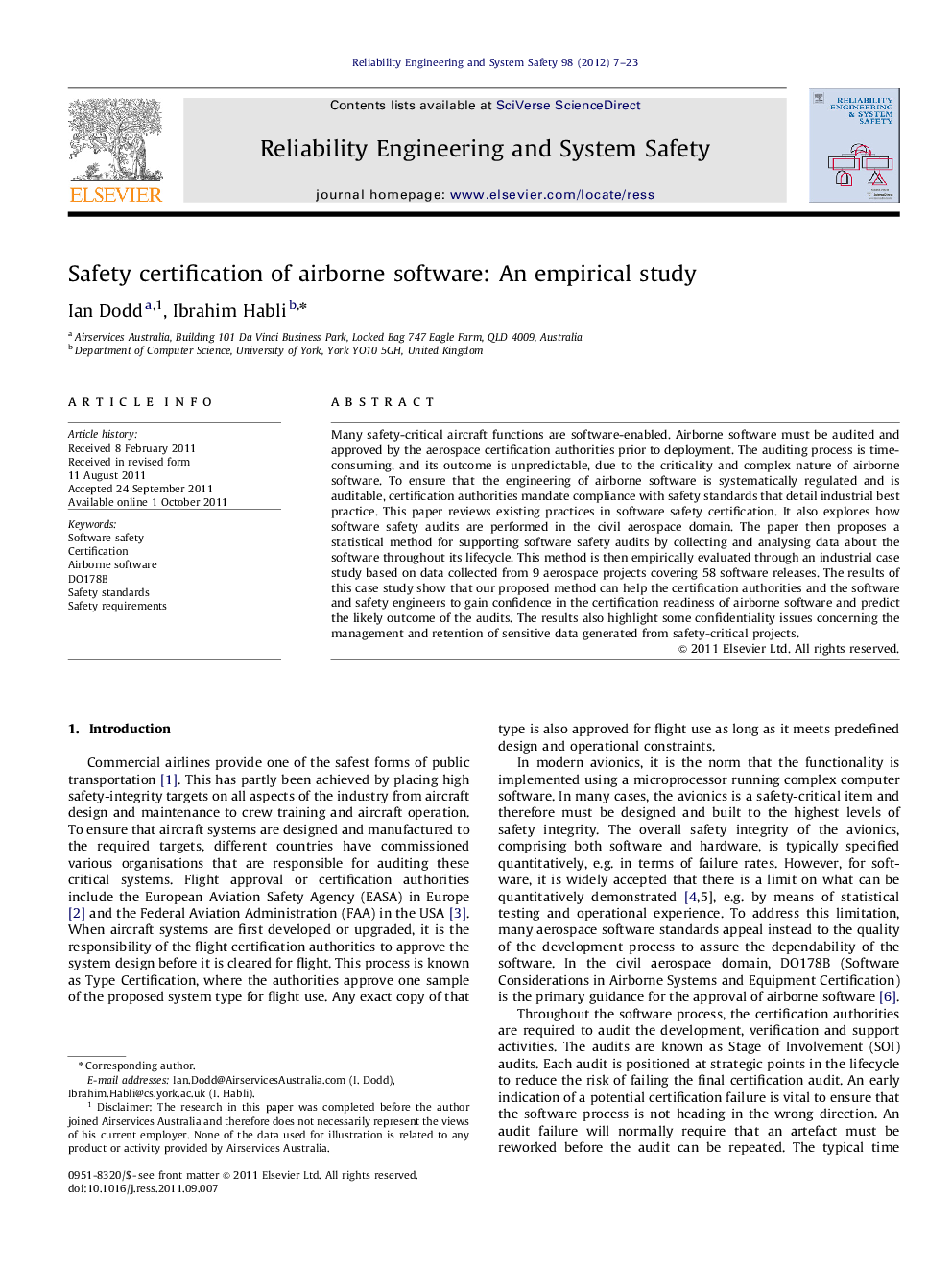| Article ID | Journal | Published Year | Pages | File Type |
|---|---|---|---|---|
| 803281 | Reliability Engineering & System Safety | 2012 | 17 Pages |
Many safety-critical aircraft functions are software-enabled. Airborne software must be audited and approved by the aerospace certification authorities prior to deployment. The auditing process is time-consuming, and its outcome is unpredictable, due to the criticality and complex nature of airborne software. To ensure that the engineering of airborne software is systematically regulated and is auditable, certification authorities mandate compliance with safety standards that detail industrial best practice. This paper reviews existing practices in software safety certification. It also explores how software safety audits are performed in the civil aerospace domain. The paper then proposes a statistical method for supporting software safety audits by collecting and analysing data about the software throughout its lifecycle. This method is then empirically evaluated through an industrial case study based on data collected from 9 aerospace projects covering 58 software releases. The results of this case study show that our proposed method can help the certification authorities and the software and safety engineers to gain confidence in the certification readiness of airborne software and predict the likely outcome of the audits. The results also highlight some confidentiality issues concerning the management and retention of sensitive data generated from safety-critical projects.
